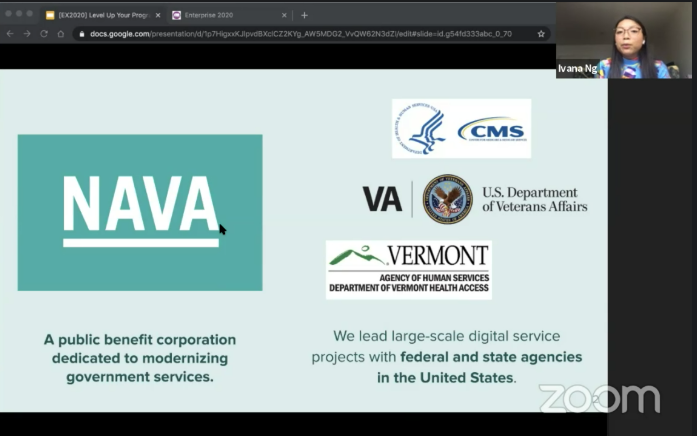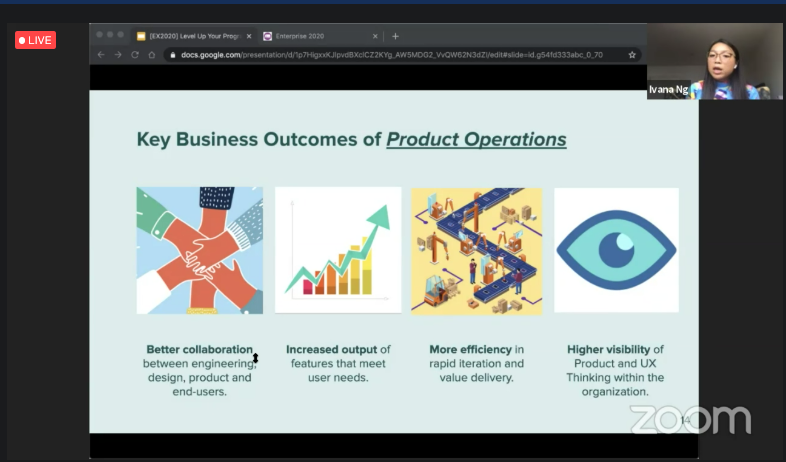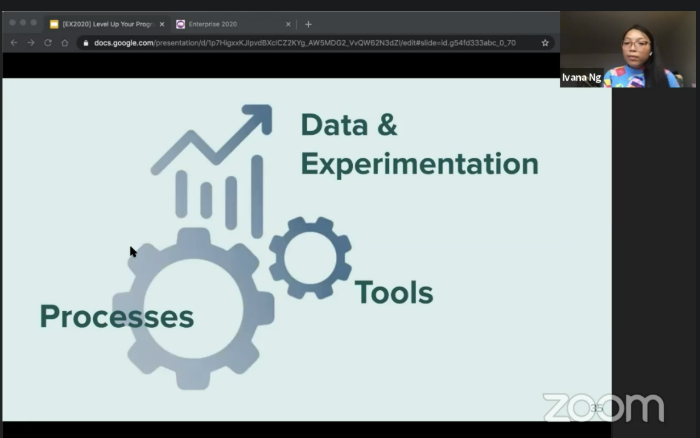Tripnotes: Level Up Your Program with ProductOps

NAVA is a public benefit corporation dedicated to modernizing government services. Their work includes large-scale digital projects for federal and state agencies throughout the United States. Nava’s Mission is to help public institutions earn trust by quickly and efficiently responding to people’s needs.
Massive Scale
Ivana Ng, Director of Product at Nava PBC walked through a recent project on Cloud IT Transformation for the Centers for Medicare and Medicaid Services as a case study on the importance of ProductOps for design programs. For context, this was a massive project with $60M in the budget, a three-year contract, and the need to hire 185 people within three months.
For scale, this hiring velocity is equivalent to onboarding three new team members per day.
Legacy Challenges
The nature of government clients also means stakeholders might not be familiar with UX principles most of us take for granted:
- Focus on solving problems rather than designing solutions
- Talk to end-users in order to better understand their needs
Additionally, the turnover of contractors disrupts design work continuity and knowledge transfer.
Introducing: ProductOps
The question became “how do we ensure the human-centered design and product thinking become the culture of a government agency?”

For that, Ivana and her team turned to ProductOps: a methodology centered around investing in the product early and setting a team up with tools to operate in a consistent way. This results in
-
Better collaboration between engineering, design, product, and end-users.
-
Increased output of features that meet user needs.
-
More efficiency in rapid iteration and value delivery
-
Higher visibility of Product and UX Thinking within the organization
Core components of ProductOps

- Processes: build product thinking capacity across the enterprise.
- Tools: streamlining license management and ensuring access. Testing processes quickly and efficiently ensure they met your team’s needs.
- Data and experimentation: defining success criteria and metrics. Measuring these figures to assess both successful areas and aspects of products that require iteration.
How to Level Up your Program
Implementing ProductOps enables teams to make data-driven decisions at scale, as in the case of NAVA where millions of people’s quality of lives are impacted. By building out our processes, tools, and data practices, we enable teams to create better solutions to solve problems. Here’s how you can improve ProductOps at your organization:
- Processes: Use Nava’s Product Ops Toolkit
- Tools: Conduct an audit of the tools your team uses and identify opportunities to consolidate + streamline.
- Data and experimentation: Develop a product hypothesis and design ane experiment to validate that hypothesis

